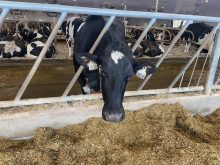Scientists have traditionally believed that combining more than two drugs to fight harmful bacteria would yield diminishing returns.
The prevailing theory is that the incremental benefits of combining three or more drugs would be too small to matter, or that the interactions among the drugs would cause their benefits to cancel one another out.
Now, a team of biologists from the University of California, Los Angeles, has discovered thousands of four- and five-drug combinations of antibiotics that are more effective at killing harmful bacteria than the prevailing views suggested.
Read Also

Ontario’s other economic engine: agriculture and food
Ontario Federation of Agriculture president, Drew Spoelstra, says Ontario’s agriculture and agri-food sector should be recognized for its stability and economic driving force.
Why it matters: The findings could be a major step toward protecting public health at a time when pathogens and common infections are increasingly becoming resistant to antibiotics.
The findings were reported recently in the journal npj Systems Biology and Applications.
“There is a tradition of using just one drug, maybe two,” said Pamela Yeh, one of the study’s senior authors and a UCLA assistant professor of ecology and evolutionary biology.
“We’re offering an alternative that looks very promising. We shouldn’t limit ourselves to just single drugs or two-drug combinations in our medical toolbox. We expect several of these combinations, or more, will work much better than existing antibiotics.”
Working with eight antibiotics, the researchers analyzed how every possible four- and five-drug combination, including many with varying dosages — a total of 18,278 combinations in all — worked against E. coli. They expected that some of the combinations would be very effective at killing the bacteria, but they were startled by how many potent combinations they discovered.
Some of the four- and five-drug combinations were effective at least partly because individual medications have different mechanisms for targeting E. coli. The eight tested by the UCLA researchers work in six unique ways.
“Some drugs attack the cell walls, others attack the DNA inside,” Savage said. “It’s like attacking a castle or fortress. Combining different methods of attacking may be more effective than just a single approach.”












